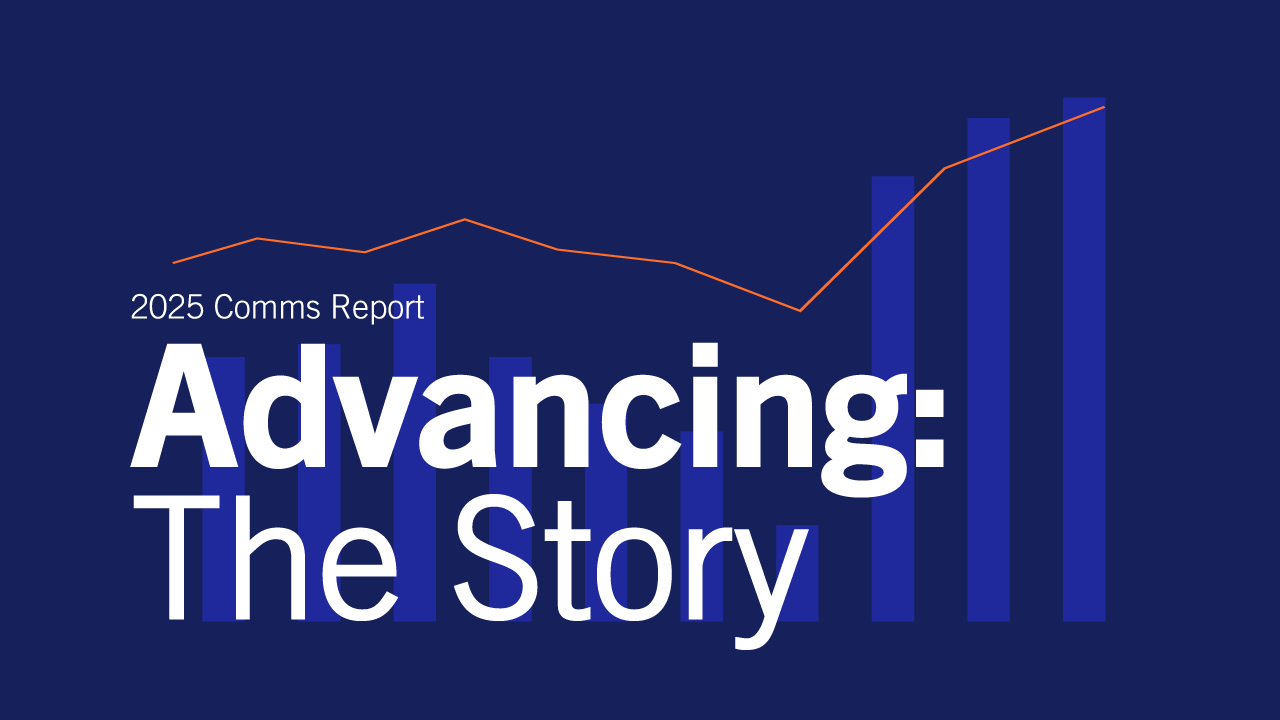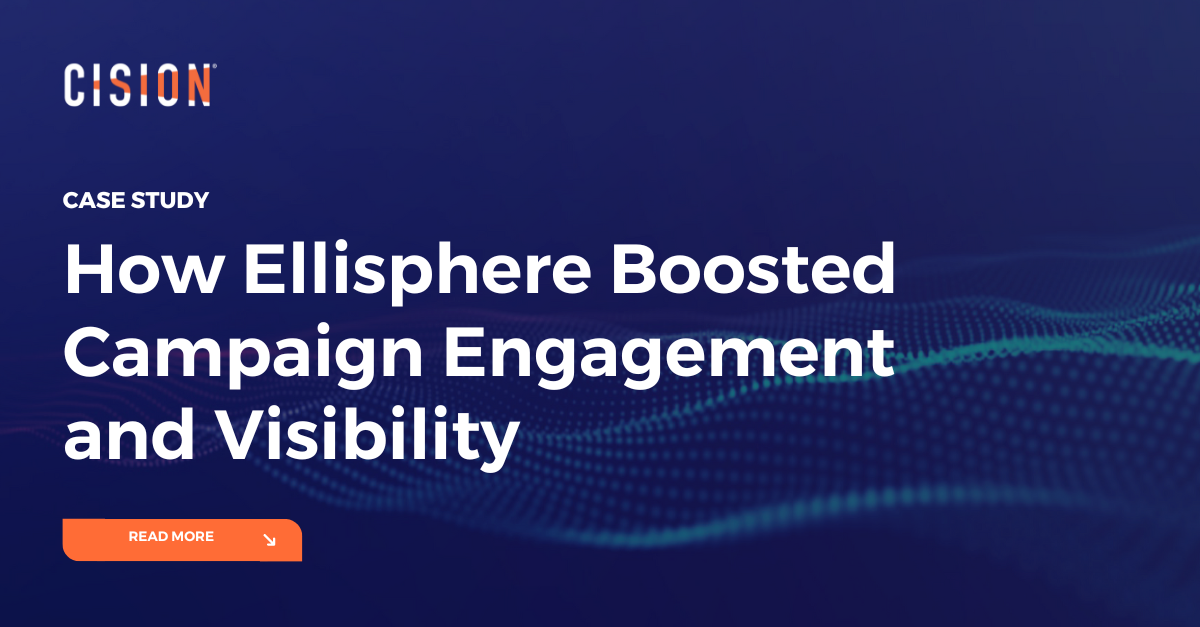What does public relations mean for the modern professional? New technologies have changed the way brands conduct PR, from the type of content produced to who they pitch to. There’s far more to the industry now and knowing all the tools and options at your disposal will help you create and implement the most effective PR strategy you can.
We’re going to dive into the different types of public relations disciplines, backed up with real examples, so you know what you can do to get your message to the right people at the right time.
What Does Public Relations Mean?
The Public Relations Society of America (PRSA) offers the following as a formal definition of public relations:
“Public relations is a strategic communication process that builds mutually beneficial relationships between organizations and their publics.”
With this definition as a starting point, we can go further and say public relations is all about creating and promoting content that makes your business favorable in the eyes of its target audience.
To do this, PR generates positive publicity around your brand’s:
- Products
- Services
- Campaigns
- Accomplishments
- Ethos
- Corporate social responsibility
- Unique value proposition
The goals are to build brand credibility and authority, shape your company narrative, and get in front of your target audience. When done right, PR establishes your business as a thought leader that customers trust and want to buy from.
What Does This Definition Mean for PR Professionals on A Practical Level?
Overly pushy or aggressive sales messages aren’t effective in building relationships between a brand and their audience. Instead of just touting how great your business is, successful PR professionals focus on creating audience-relevant content that subtly promotes it.
Spinning a narrative audiences can relate to, where you show exactly how your products or services can help with a problem people have, shows you understand their needs or are aligned with their interests. This approach can lead to greater engagement over time.
Building relationships is essential, but it’s not just with your audience you should focus on. Relationships with journalists and media outlets can help you get your messages and content to more people, so this valuable skill is used in different ways.
What Are the Different Types of Public Relations?
Technology has changed how people communicate, and brands have had to adapt to make sure they have a presence where their audiences are. As technology and audience behaviors have evolved over the years, so has PR, leading to the emergence of different types of PR, which fall primarily into two broad categories:
- Traditional PR
- Digital PR
Taking advantage of both traditional and digital PR is essential to get the most out of any strategy, but you first need to know what the differences are and what each involves.
What is Traditional PR?
Traditional PR is defined by “non-digital” tactics, such as media networking and creative advertising, with the goal of earning coverage in traditional or “old media” outlets, including television networks, radio stations, and print publications.
Some professionals may question the relevance of strategies that utilize traditional PR activities and outlets given the rise of social media and digital platforms but are still an important medium for many households. Demographics and audience segmentation can help you determine how relevant these options are for your brand.
What is Digital PR?
Digital PR is the practice of boosting positive brand awareness through online platforms. It borrows from both traditional PR (e.g. building relationships with the media) and digital marketing disciplines, including:
- Content marketing
- Influencer marketing
- SEO
- Social media marketing
- Design
For another way to look at digital PR, consider this recent crowdsourcing experiment from one of the marketing industry’s most prolific thought leaders, Rand Fishkin.
To get a clearer definition of digital PR, Fishkin turned to his social media followers, asking them, "How do you define the term 'Digital PR'?" via a Twitter/X poll, with the following options:
- A) Traditional PR online: All the bits of traditional PR, but targeted at online sources, formats, and audiences
- B) Digital outreach: Coverage-seeking outreach focused on digital publications
- C) Fancy "Link building": Mostly just "link building" with a more palatable name
The results were close, but most marketers and PR professionals defined digital public relations as “Coverage-seeking outreach focused on digital publications” (38.7%) as opposed to “Traditional PR online” (36.7%) or “Fancy link building” (24.6%).
Link building focuses on getting links to your website from other sources, specifically trusted and highly authoritative platforms (such as media outlets), and used to be a primary part of digital PR. Links are still important, but as they become harder to get more attention is given to brand reputation and awareness.
What Is the Difference Between Digital and Traditional PR?
Understanding the difference between these two types of PR – and how they work together – will help you create the best strategy possible.
Tricia Harte Miller, Director of Digital PR at Digital Third Coast, has created a handy Venn diagram to help PR and marketing professionals understand the similarities and differences between traditional and digital PR.
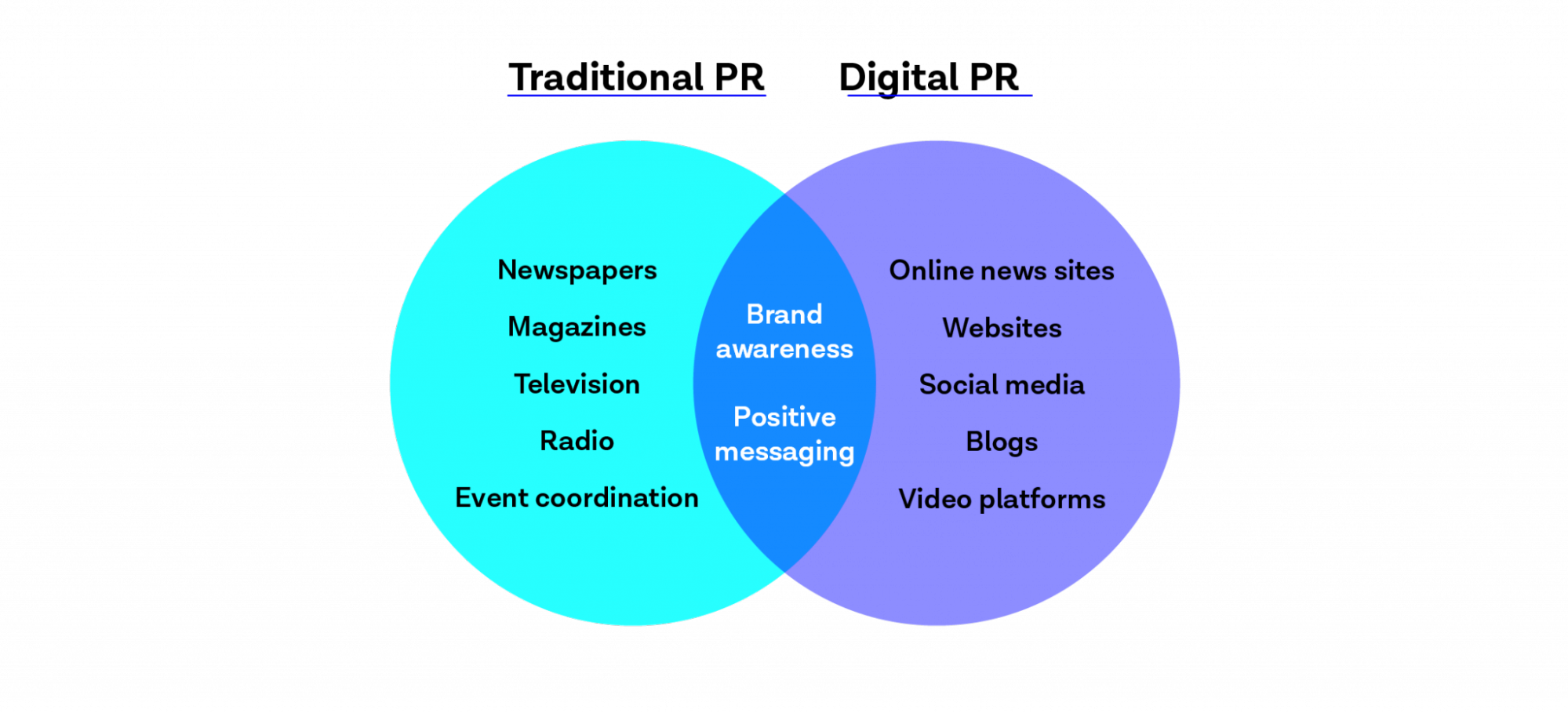
This shows us that while the activities carried out for both types of public relations are different, there is some crossover – and the ultimate goals professionals are looking to achieve remain the same.
In short, digital PR focuses on platforms and outlets people use on digital devices, such as smartphones and tablets. Traditional media outlets, such as TV and newspapers, may have digital presences, but also offer offline options.
Wait times for traditional PR may be longer, as it takes more time to collect and print a full newspaper or magazine compared to releasing an online article or blog. To make sure you get the biggest impact from your campaign or message featured in both types of PR, traditional and digital, you’ll want to plan ahead and coordinate the release for the biggest impact.
Due to traditional PR’s longer wait times, planning far in advance is a must for this approach. Digital PR utilizes platforms where content can be implemented and released quickly. Planning is still crucial, but lead times are smaller than they once were. Coordinating across both types of public relations categories is also important for maximum impact.
What Does Public Relations Mean to Marketers and PR Pros?
While we have an official definition of PR, as well as an understanding of the different disciplines involved, there’s still more to this story. Public relations can mean different things to professionals in specific settings, which paints a better picture of what this sector is all about. We’ve collected views from experts on what PR means to them.
PR pro Carly Martinetti defines public relations as the art of finding the sweet spot between what the media (and its audiences) find interesting, and what furthers your brand's underlying business objectives.
In other words, it's about identifying the intersection of the publication's interests and the client's interests. Go too far by pushing the brand's agenda and you won't get press coverage. But, if you only pitch stories based on what's trendy to reporters, you won't drive any real results for the brand. The true PR professional walks that tightrope, expertly balancing media and brand demands.

PR expert Michelle Garrett sees PR as much more than just leveraging personal connections. She warns her followers that PR is not simply a matter of "who you know" in the media world, and that journalists won’t just run your story as a favor. Ultimately, your story must have a newsworthy angle.
While good working relationships with journalists may get your pitch read, it won’t guarantee you coverage. That comes down to the power of your story.
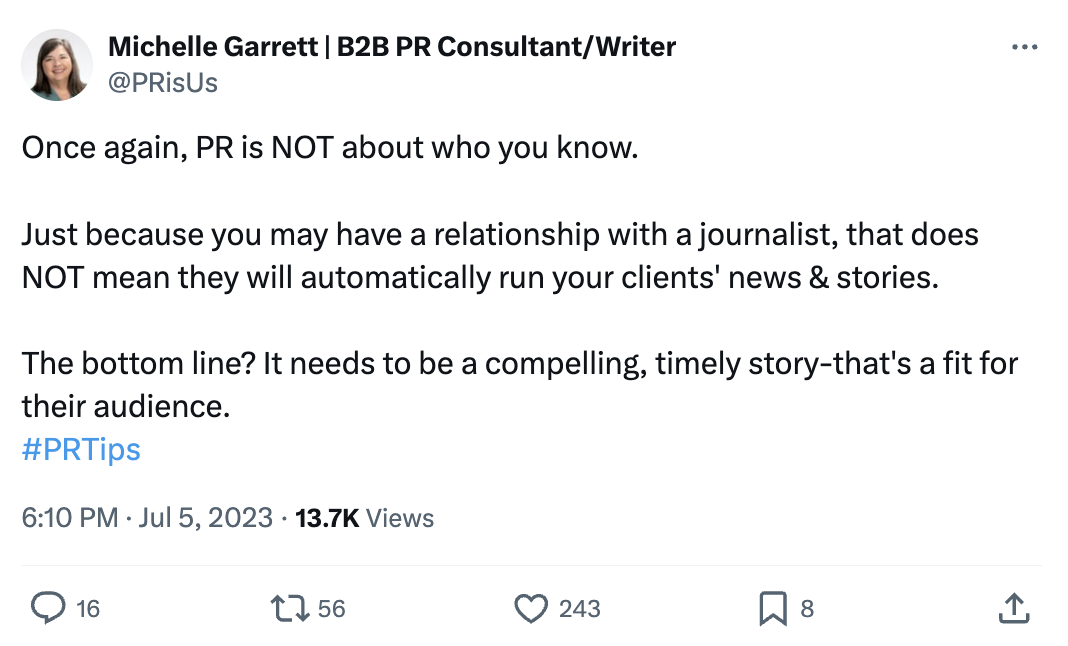
Leading PR pros like Carrie Rose and Mady Lanni define digital PR in relation to its ties to search performance. Simply put, media coverage measurably impacts search behavior – driving up demand for featured brands and influencing potential customers in the discovery phase.
Brands can create search volume and demand around their products, services, or brand mission all through digital PR. But, as Lanni points out, brands need to be deliberate with their PR, carefully choosing topics that will earn them relevant links and keywords capable of driving that new demand back to their own website.

Leading PR pros like Carrie Rose and Mady Lanni define digital PR in relation to its ties to search performance. Simply put, media coverage measurably impacts search behavior –driving up demand for featured brands and influencing potential customers in the discovery phase. Brands can create search volume and demand around their products, services, or brand mission, all through digital PR. But, as Lanni points out, brands need to be deliberate with their PR, carefully choosing topics that will earn them relevant links and keywords capable of driving that new demand back to their own website.
What Do PR People Do?
Being a PR professional requires you to fill a lot of roles, regardless of the types of PR you conduct. We can liken these roles to those of ambassadors, storytellers, translators, and even firefighters, and while you may specialize in one or two specialties, having the skills to take on all of these roles gives you an advantage over other professionals.
Ambassadors
Just like an ambassador represents their country to the world, a public relations professional either acts as an ambassador for an organization, or trains others to be one. Their job is to shape positive relationships with customers, investors, employees, and the media.
PR professionals coach and prepare a company's subject matter experts (SMEs) for publicity through interviews and media training sessions. Then, they go to press with this expert commentary in the hopes of securing positive coverage.
As an example, Fery Kaszoni, founder of Search Intelligence pitched his client, the nutrition and fitness brand Bulk, to provide expert commentary on a trending story surrounding Coldplay's Chris Martin and his one-meal-a-day lifestyle.
Kaszoni advised Bulk to weigh in with their expertise on early morning versus evening workouts, ideal morning meals, and marathon nutrition tips.
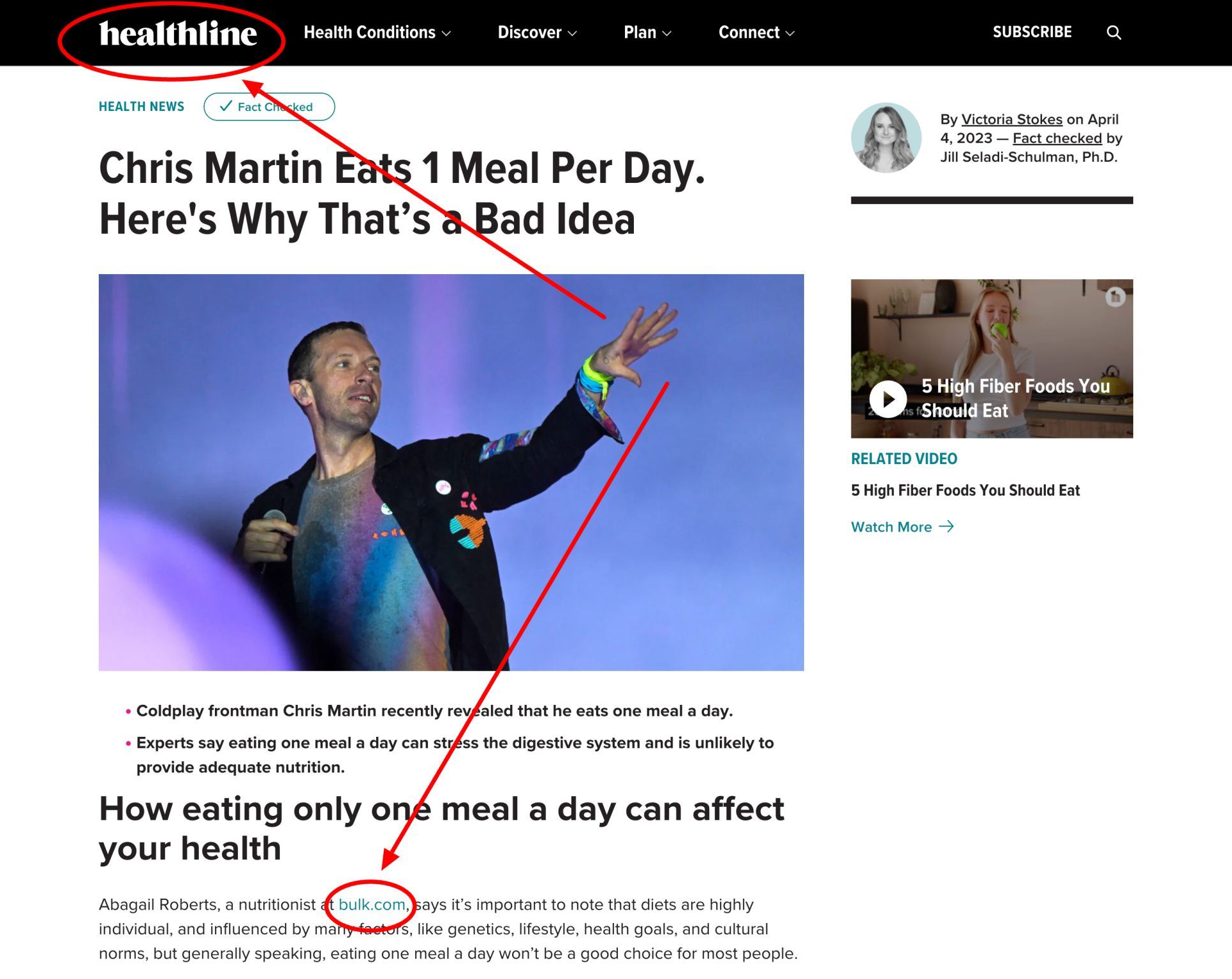
As a result, he enabled the brand to earn 40 pieces of PR coverage in national media publications, including Healthline and The Huffington Post.
Storytellers
As a storyteller, PR pros weave compelling narratives that resonate with their brand’s audiences and improve brand equity. They humanize the brand by showing its authentic side, something UK cereal brand Surreal does brilliantly through brand storytelling.
Go on their About Us page, and it won’t take you long to realize that they don’t take themselves too seriously.

In fact, scroll down a little further and you’ll see that their core mission is to “Never stop playing”.

And this playful storytelling comes across loud and clear in the Surreal’s PR. From wacky out of home (OOH) ads:
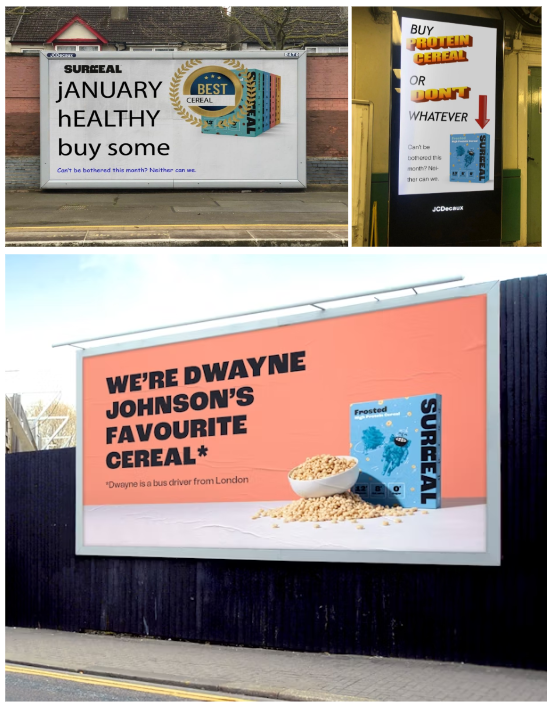
To amusing product-led PR stories:
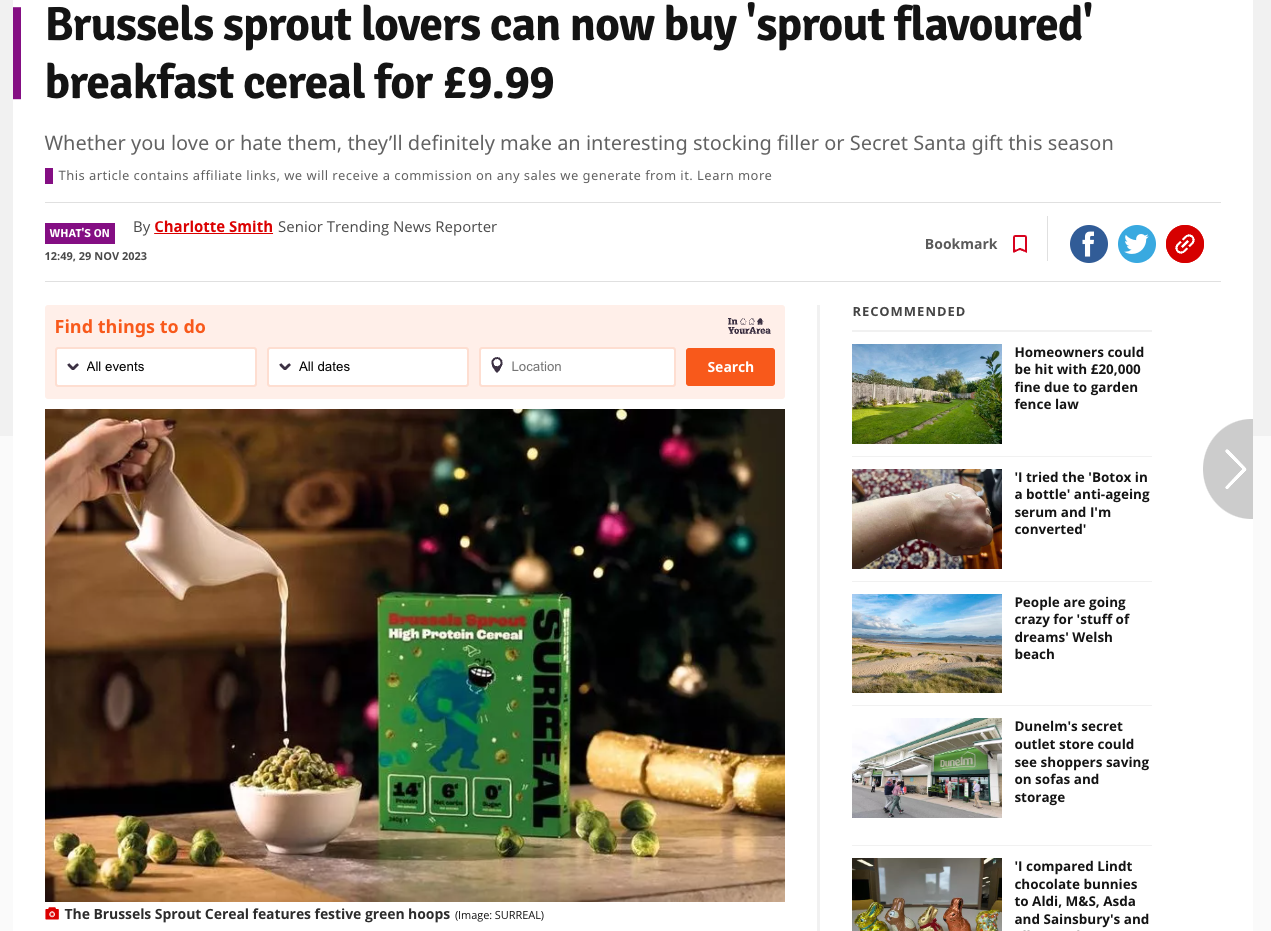
All of these PR storytelling initiatives play into the brand’s core unique selling point (USP) of being a “healthy” cereal option, while also reinforcing their mischievous mission.
Translators
PR experts are translators of complex brand messages, strategies, and goals into language that audiences can understand and get behind.
Here’s a brilliant, retro example of Volkswagen translating a complex brand message, as found on the LinkedIn page Campaign Inspiration:

The print ad succinctly translates Volkswagen’s USP of reliability, by contrasting the many technical issues and maintenance requirements of "ordinary cars" with the trouble-free owner-experience of Volkswagen models.
Firefighters
When a crisis arises, PR pros are there to reverse the effects of negative publicity through rapid-fire response and brand protection strategies.
Here’s a great example of crisis firefighting from the PR department of the British grocery store, Sainsbury’s – courtesy of PR expert and Founder of 10Yetis, Andy Barr.
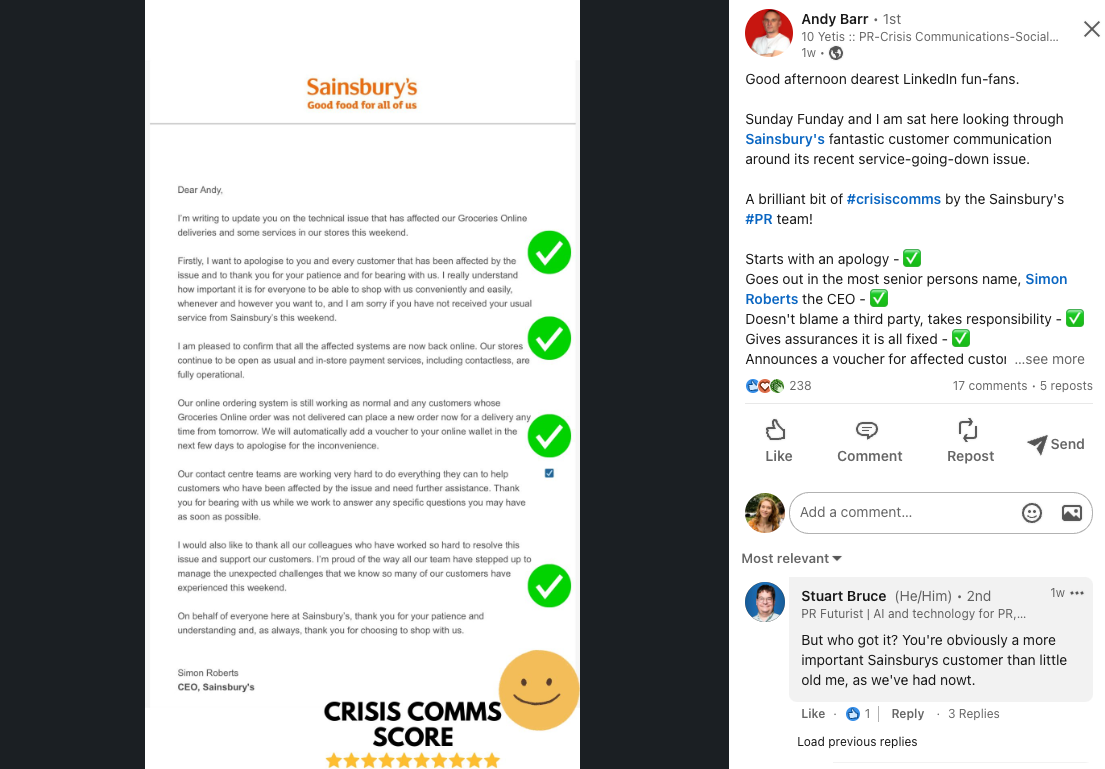
Along with many other grocery stores, the Sainsbury’s website was affected by a technical glitch which meant many customers didn’t receive their online orders.
Sainsbury’s responded by:
- Issuing a formal apology from a senior person
- Taking responsibility for the issue
- Reassuring customers that issues had been fixed
- Offering customers a complementary voucher for their next shop
Examples of Public Relations in Action
Knowing what public relations is and what PR professionals do is only part of the picture. To really know what’s possible, it helps to look at real examples of PR and learn what makes those campaigns work.
Example 1: Influencer Marketing
Influencer marketing involves partnering with popular content creators to reach new audiences authentically. A way that PR pros can harness the power of influencer marketing is through what is known as “influencer seeding”.
The PR team at London-based creative agency Rise at Seven are firm believers in the power of TikTok for product launches – especially when it comes to B2C mass-market goods.
In fact, one of their most successful product release strategies to date involved seeding B2C products to targeted influencers on TikTok. This undertaking on behalf of mass-market clothing brand Pretty Little Thing, saw the PR agency essentially manufacture their own TikTok trend.
They selected a new product that:
- Ranked in position #1 on Google
- Had strong inventory levels
When the DIY trend began to take off, Pretty Little Thing was able to turn PR coverage into sales. The product that fit the bill was the brand’s halter-neck top, which they gifted to several content creators, following the advice of Rise at Seven.

Before long, influencers were wearing the product organically and posting about it on social media.
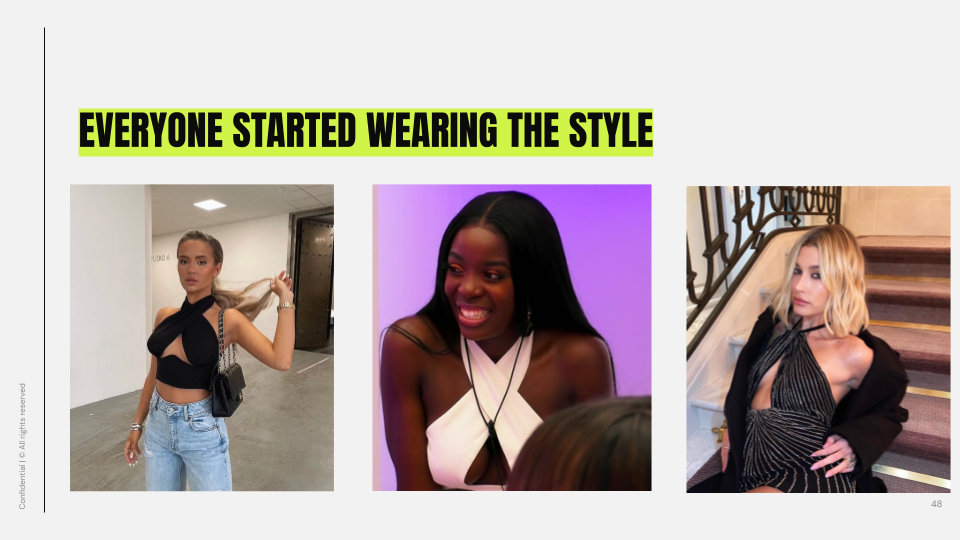
Rise at Seven compiled the resulting user-generated content into a press release about "The viral halter-neck top taking over TikTok" and pitched the story to journalists for product features and roundups, earning extensive media publicity for the brand.
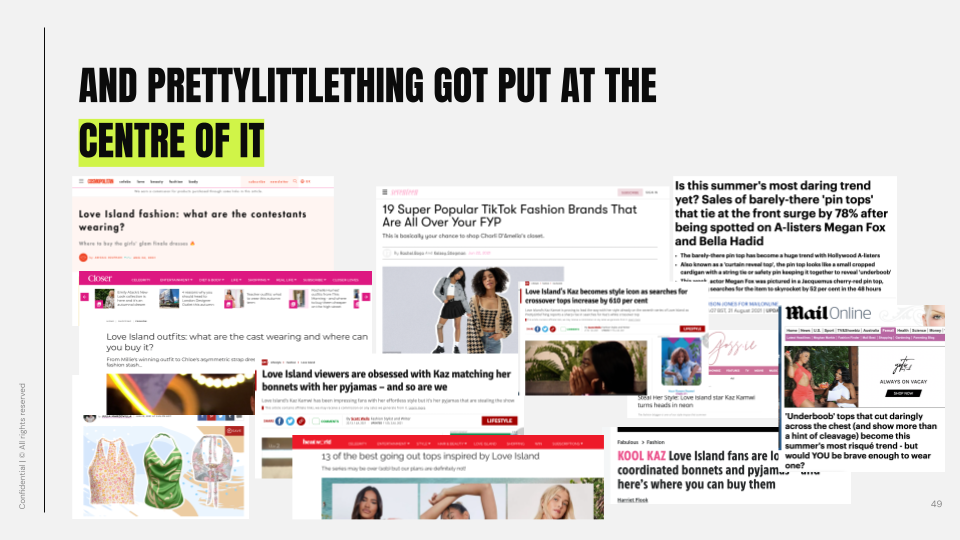
The Rise at Seven PR pros did another very smart thing to back up Pretty Little Thing’s earned media strategy: They coordinated with the Pretty Little Thing brand to push the product across owned channels like email, social media, influencers (on retainer), and brand ambassadors, to further amplify the trend they’d created.
This PR strategy firmly asserted Pretty Little Thing as trend setters, rather than clout chasers.
The moral of the story: PR professionals can mastermind viral trends, PR coverage, and even sales with the right approach.
Example 2: Press Releases
Press releases are an incredibly valuable form of PR.
In fact, we surveyed over 3,000 journalists for our State of the Media report and found that press releases are a journalist's favorite form of content to receive from PR pros. 74% of journalists prefer this type of PR versus other formats like original research (61%) and exclusives (55%).
One example of a brand using press releases well is fast food chain Wendy’s, who announced their pumpkin spiced frosty just in time for fall - and it went down a treat.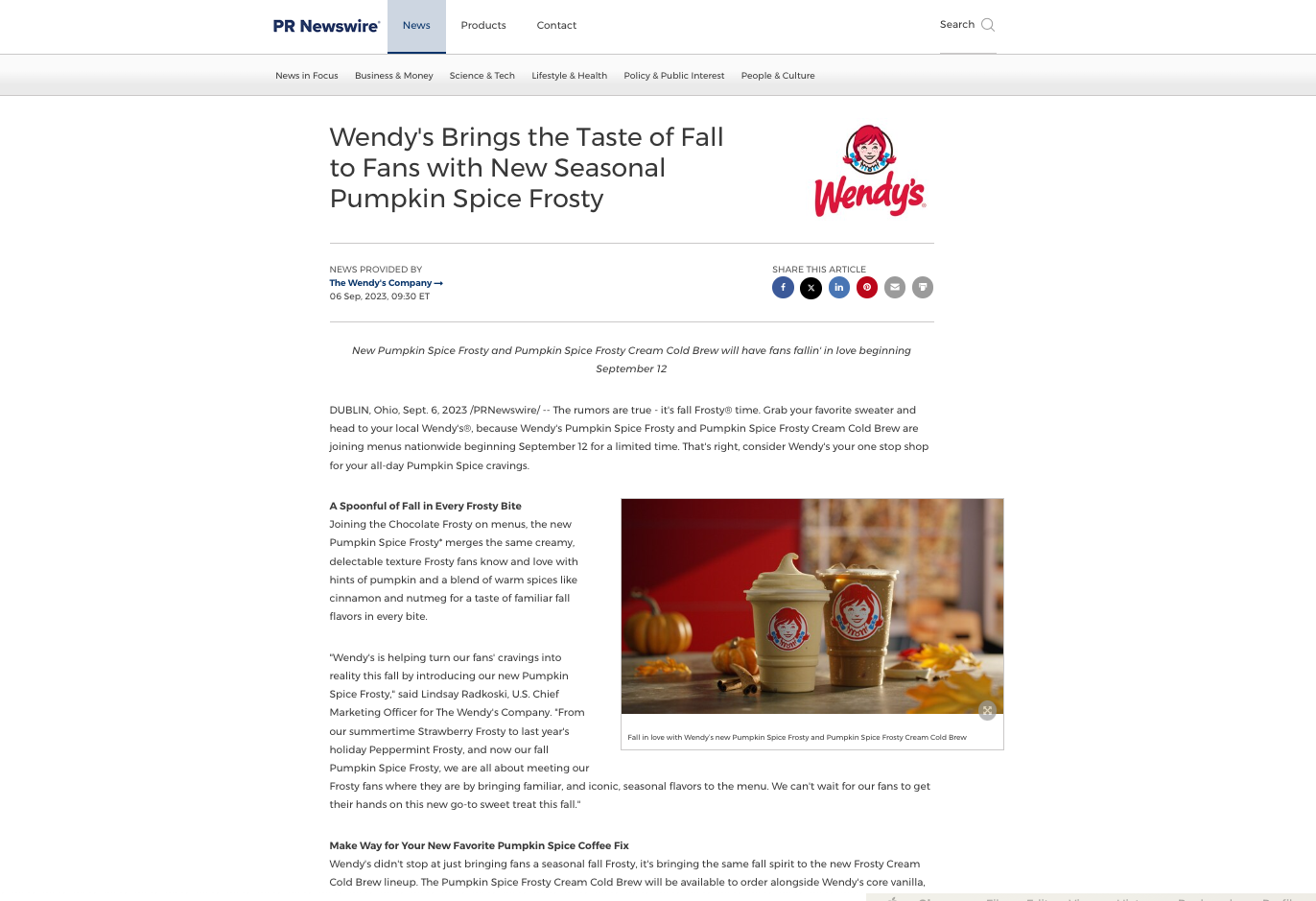
The press release featuring the announcement was distributed via PR Newswire, and picked up by 394 publications including USA Today, iHeart Radio, and Live5News.
Example 3: Newsjacking
Public relations definition guides tend to over-focus on traditional PR activities (e.g. press releases) and overlook opportunities brought about by new media (e.g. newsjacking). But a reactive PR strategy can give brands a unique opportunity to insert themselves into breaking news and cultural moments, earning them incremental coverage.
While the practice of newsjacking has been around for centuries, the concept was only coined back in 2011, by marketing and PR strategist David Meerman Scott. Since then, social media has done a lot to democratize news consumption and pave the way for brands to tap into viral conversations.
At record speed, the bath company Lush developed and went-to-market with a bath bomb inspired by a notorious scene from the Oscar-nominated film Saltburn.
Such speedy newsjacking resulted in a serious amount of coverage; driving no less than 313 mentions in online and podcast media.

According to data from Ahrefs, it also attracted 146 links from authoritative news publications directly to Lush’s product page.

Upon reading a few of the articles, it became clear that Lush’s PR team had also gifted their new product to a series of journalists, which undoubtedly reinforced the success of their reactive campaign.
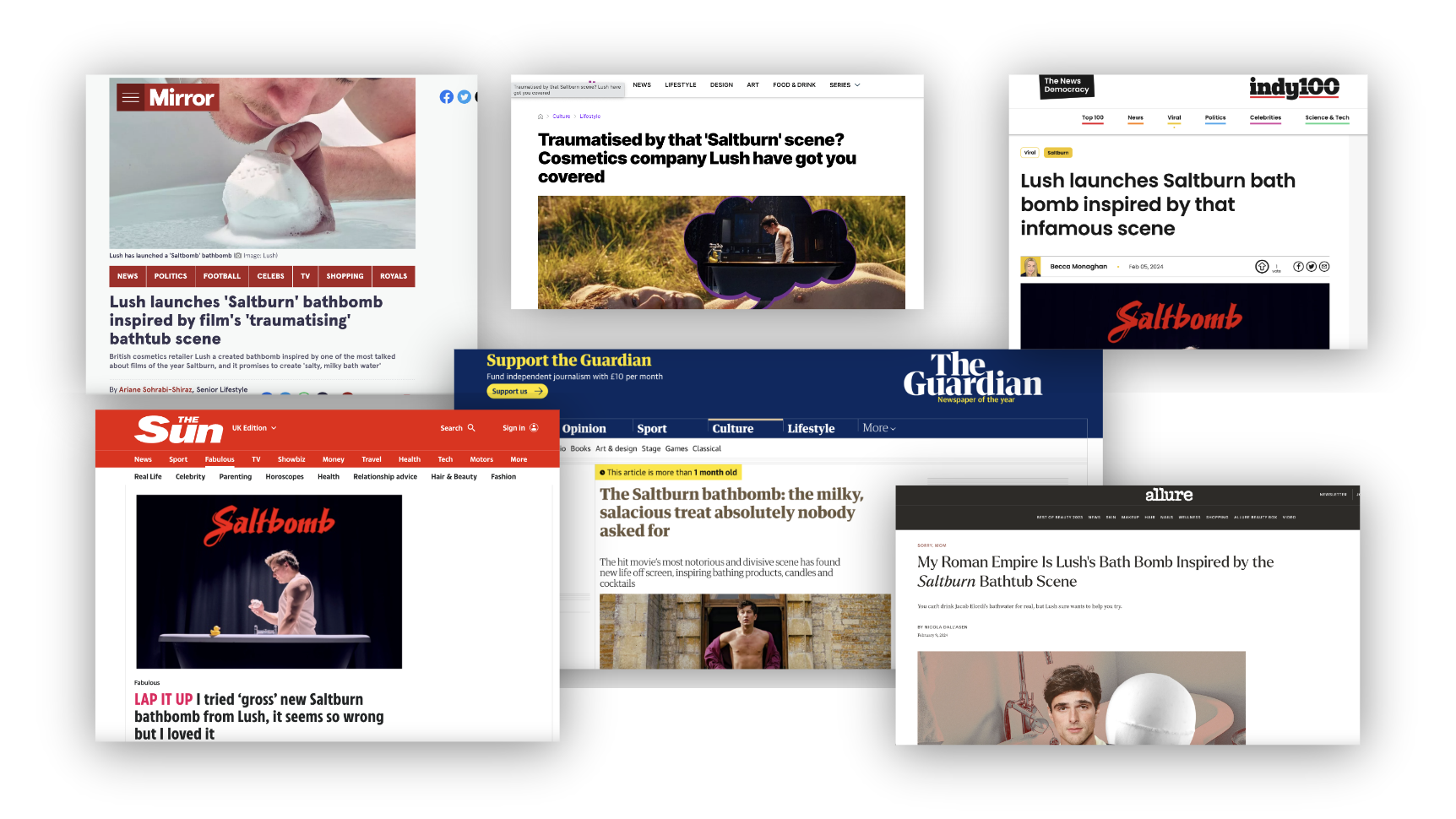
The benefit of newsjacking is that coverage doesn’t begin and end with news media. The Lush bath bomb also picked up traction on social media, leading to user-generated content and over 1k social media mentions off the back of the brand’s coordinated PR efforts, according to Brandwatch Consumer Research.

The benefit of newsjacking is that coverage doesn’t begin and end with news media. The Lush bath bomb also picked up traction on social media, leading to user-generated content and over 1,000 social media mentions off the back of the brand’s coordinated PR efforts, according to Brandwatch Consumer Research.
Example 4: Crisis Communications
In PR, crisis comms is all about implementing strategies to address situations that threaten your brand’s reputation.
When Silicon Valley Bank collapsed in April 2023, Airbase found itself in a precarious situation, as it used SVB to process over $5 billion in annual payments for its customers. This meant a large portion of its customer payments were delayed, totaling up to eight figures. To address this crisis, which affected both their business and customers, Airbase executed a multi-pronged crisis communications approach by:
- Quickly mobilizing its entire globally remote workforce to work around the clock on contingency plans
- Maintaining transparent and frequent communication with customers through multiple email updates as the situation rapidly evolved
- Directly addressing customer concerns like requests to move funds to larger banks
- Collaborating in industry Slack groups to share strategies
Airbase ultimately used the chaos as a defining moment to bring the company's leadership team together and deliver the best customer service possible.
So, What Does “Public Relations” Mean After All?
PR has evolved beyond relying on traditional methods such as print media, television, and radio – and PR professionals have had to adapt to digital platforms and tools to keep up with their audiences.
We can’t forget about traditional PR by any means, but a blend of the two types of public relations is often the right strategic approach for most brands (although some brands will benefit more from digital or traditional alone, and this should be taken into account).
At its core, modern PR is about balancing brand objectives with irresistible storytelling that the media can't help but cover. According to Nielson, a whopping 92% of customers place more faith in earned media coverage than traditional advertising.
A great PR strategy focused on stories and relating to people lets you connect with audiences authentically and earn their trust. This is just the start, however. PR is a deep and complex topic, and the more knowledge you have, the better you can make impactful plans and choices (and don’t forget to look for more examples of PR to stay on top of the latest tactics).
Take the next steps with the following resources, from putting together your strategy and campaigns to measuring their effectiveness:
- Your PR Toolkit for Success in 2025
- Building a PR Campaign
- 7 Must-Have PR KPIs to Measure Your Communications Campaign
To help create a strategy focused on your goals, consider what tools can help. CisionOne, for example, lets you tap into media monitoring, journalist contacts, social listening, and other features that can drive your brand's story and build strong relationships.
Most Recent Posts
Cision Resources
-
E-books and Guides
Comprehensive how-to guides on strategy and tactics
-
Case Studies
What are other brands doing – and how can we learn from them?
About Dave McCreery
Dave is the Senior Content Manager at Cision specializing in SEO-driven content strategies. He has over 10 years of content creation experience and proven success crafting stories that engage, educate, and entertain audiences across different markets and industries.
Learn More. Do More. demo new
PR Tips, Case Studies, and Product Updates

[On-Demand Webinar] The Next Generation of Media Intelligence: From Gorkana to CisionOne
Explore CisionOne, a revolutionary media intelligence platform, and the evolution of Gorkana. Learn key features and strategies from Luke Williams, CisionOne Product Marketing Manager. Elevate your media outreach to new heights!

